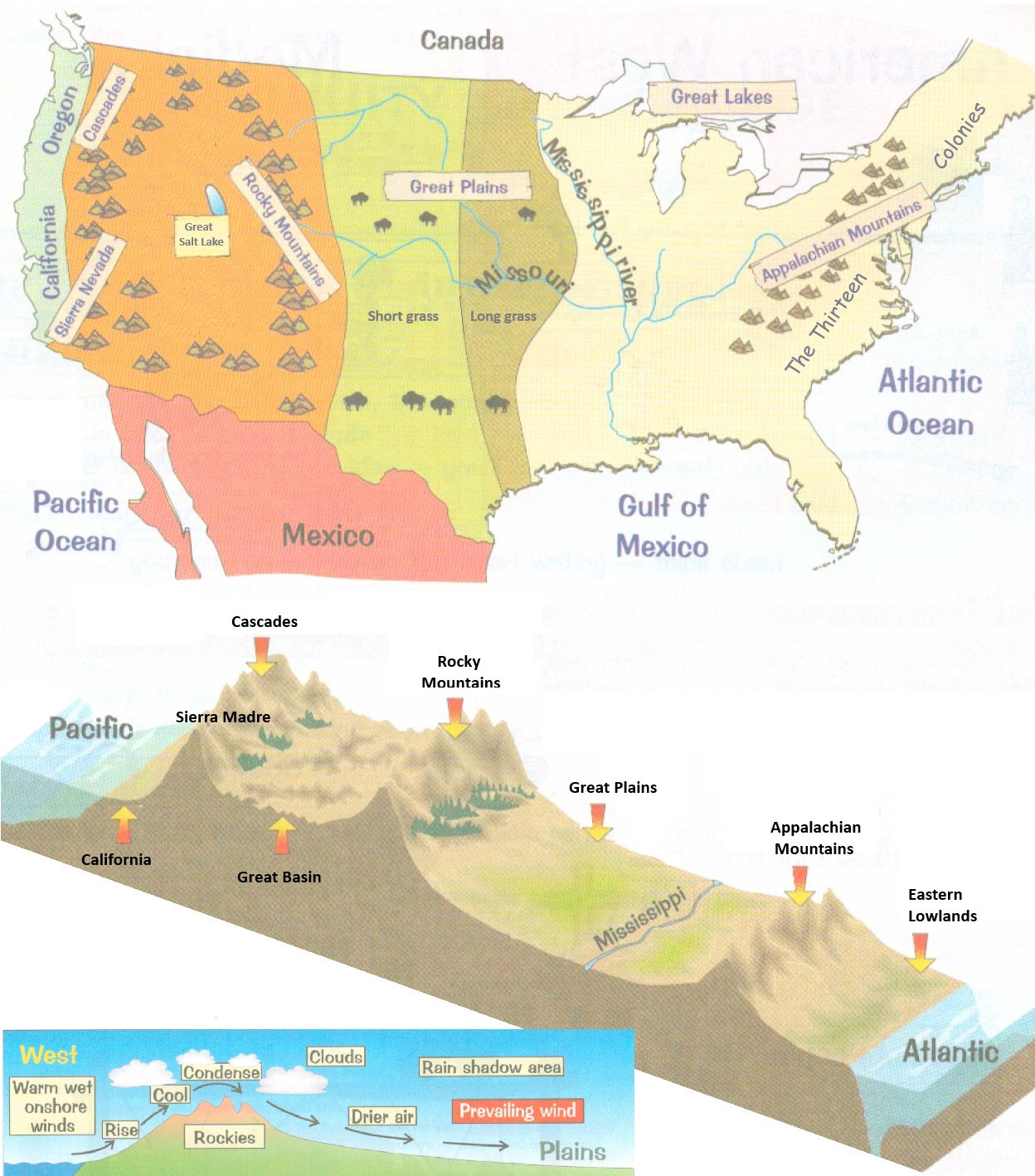|
|
|
|
North America is huge (it is further from New York to San Fransisco than it is from London to Moscow) and hugely varied: there are forests in the north-west and north-east, and wide grasslands on the Great Plains; in the north it is very cold; there are hot deserts in the south, and the Rocky Mountains in the west; even California, which has the most fertile land, can suffer from the hot El Niño winds, and hot dry winds which pour down from the mountains causing fires. The first European settlers colonised the east coast, and for a long time stayed there – the Appalachian Mountains and the Mississippi River formed natural barriers, and they believed that the area in the middle of America was a desert where nothing could be cultivated and where no one could live – so there was no point in settling it.
|
Going DeeperThe following links will help you widen your knowledge: Basic account from BBC Bitesize
YouTube The Great Plains Today - first 15 minutes.
|
The Great Plains Environment in 1840 [GREAT]The geography and environment of the American West were the single greatest influence on its history, 1840-95, and determined the way of life of the Indigenous Nations, the challenges facing the early pioneers and homesteaders, and the government's actions, laws, and policies towards the Indigenous Nations. The significant characteristics of the American West were:
Source A
|
Source BMany of the present establishments are separated from each other by immense and trackless deserts, having no communication with each other by land, except now and then a solitary instance of its being attempted by hunters, who have to swim rivers, expose themselves to the inclemency of the weather, and carry their provisions on their backs. President Thomas Jefferson, An Account of Louisiana (1803), writing after the United States had bought 828,000 sq. miles of land – most of the Great Plains – from France for $15 million.
Source CThese vast plains may become in time equally celebrated as the sandy deserts of Africa; for I saw in my route, in various places, tracts of many leagues, where the wind had thrown up the sand, in all the fanciful forms of the ocean’s rolling wave, and on which not a speck of vegetable matter exhibited. The Journal (published 1810) of General Zebulon Pike, who explored Colorado in 1806.
Source DI do not hesitate in giving the opinion, that it is almost wholly unfit for cultivation, and of course, uninhabitable by a people depending upon agriculture for their subsistence. Although tracts of fertile land considerably extensive are occasionally to be met with, yet the scarcity of wood and water ... will prove an insuperable obstacle in the way of settling the country. Description by Edwin James, in the 1823 report of Major Stephen Long’s exploration expedition (Long’s map of the area labelled the Great Plains the 'Great American Desert').
Source EThis region ... has not inaptly been termed 'the great American desert.' It spreads forth into undulating and treeless plains, and desolate sandy wastes, wearisome to the eye from their extent and monotony.... It is a land where no man permanently abides; for, in certain seasons of the year there is no food either for the hunter or his steed. Author and diplomat Washington Irving, Astoria, 1836 (a history of New York businessman John Astor’s expedition to Oregon in 1810-13).
Consider:1. Use Source A to explain WHY the Great Plains were like they were. 2. What would be the problems of crossing the Great Plains? What would be the problems of living on the Great Plains? 3. Study Sources B-E. What was the attitude of the United States to the Great Plains before 1840?
|
|
|
|
|
Spotted an error on this page? Broken link? Anything missing? Let me know. |
|
